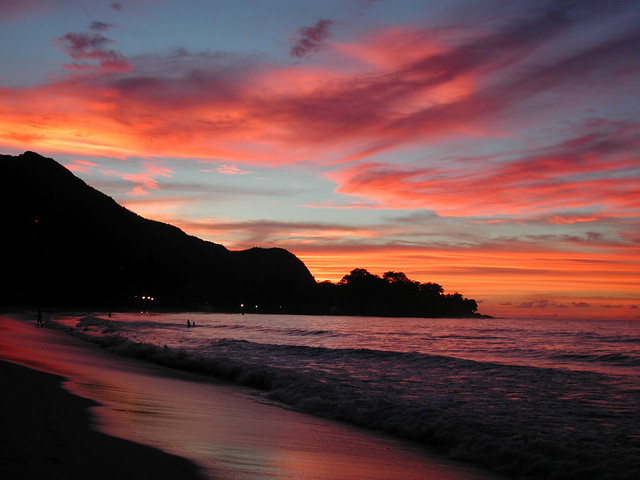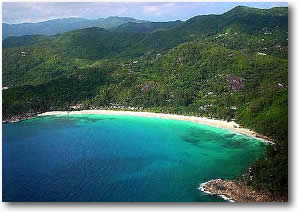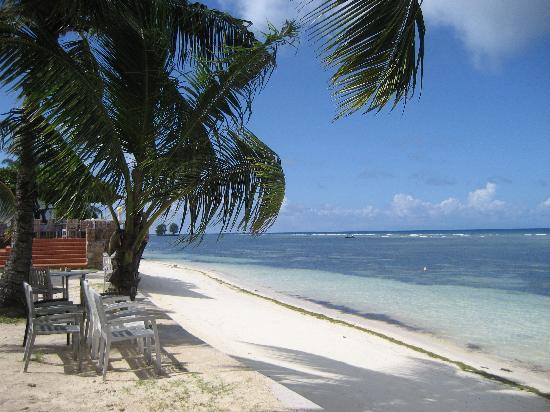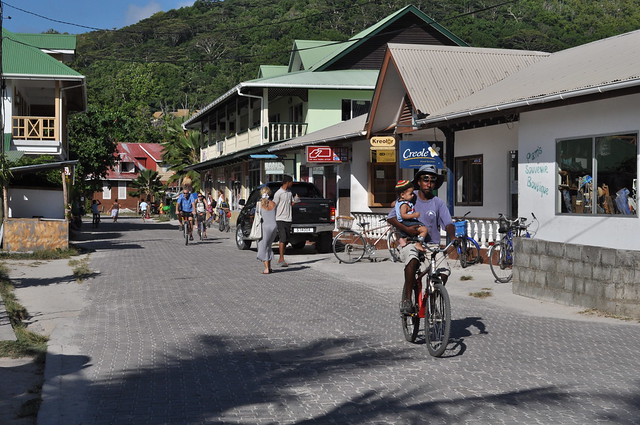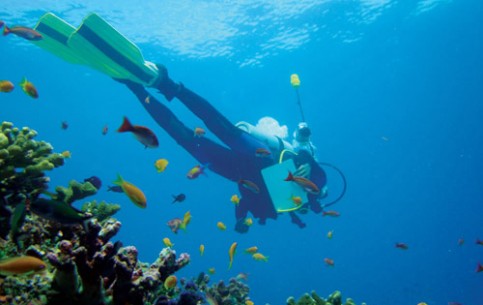Mahé, measuring 28km long by 8km wide, is the largest island and cultural and economic hub of the Inner Islands, and the international gateway to Seychelles. It is home to the international airport and the nation’s capital, Victoria.
The island is home to almost 90% of the total population (or approximately 72,200 people) reflecting Seychelles' diverse ethnicity and descent from African, Indian, Chinese and European populations, and is the seat of government and the chief centre of commerce.
With a backdrop of towering 1000m granite peaks, Mahé is an extraordinary treasure trove of flora that has evolved over centuries of splendid isolation. Rare endemic plants found nowhere else in the world adorn Mahé’s mist forests in mountain strongholds, such as the Jellyfish Tree, the carnivorous Seychelles Pitcher Plant and the Seychelles Vanilla Orchid.
First visited by the British in 1609, Mahé was not visited again until Lazare Picault's expedition of 1742 when the gradual process of settling the island began, first by the French whose direct influence continued until 1814 and then as a British colony until Seychelles gained independence in 1976.
Mahé is the transportation hub for island-hops and day excursions to neighbouring islands and all other islands within Seychelles. All scheduled domestic flights by Air Seychelles originate from Mahé to the serviced islands.
A leisurely tour of the island by car will take 2 to 2 1/2 hours and reveal the lion’s share of Seychelles’ accommodation facilities, places of cultural interest and other attractions.
Things to do on MahéRefreshing waterfall A nice walk starting at the church of Port Glaud. Take the path at the right of the church, walk through the beautiful landscape and through the houses until you see a sign "Welcome tourist". Go up the path until you arrive at the waterfall farm. Once you paid the entrance fee (25 rupees each), you can admire all the animals of the farm on your way to the waterfall. Among them some cute bats take a nap in a cage, but they need more than your presence to be disturbed! Follow the path guided by the sound of the water. Admire the beauty of the spot, sitting on a rock...Then take a swim in the water, so great and refreshing!
Few people know about this waterfall, maybe that's why it is so peaceful. You may find the price expensive, but believe me, this place is really worth a visit!
Victoria – the Market and the Bazar The Selwyn Selwyn-Clarke Bazar was built in 1840 and was renovated in 1999.This is the place to go on Saturday morning! Really colourful and typical, the market located in the Bazar on Market street is a pleasure to the senses. Listen to the locals arguing about the price of mangos, bananas or chilis, and buy some refreshing fruits yourself. Watch the birds waiting for some fish to eat on the stalls, then go upstairs to the numerous shops selling souvenirs, local work or clothing, and have a drink at Jolie Rose. The market stretches in Market Street as well.
The Bazar is open from Monday to Friday from 7 am to 4 pm, and on Saturday from 6 am to 12 but it’s more animated on Saturday morning
Victoria – The National Botanical Gardens Buildt in 1901, this 5 acre park located in Mont Fleuri, on the outskirts of Victoria, houses various endemic species of plants as well as other exotic species brought to the Seychelles by its founder, who used to bring back trees and plants from its travels. It is one of the only places on Mahé where you can see the Coco de Mer tree, only growing in the Vallée de Mai on Praslin Island. Fruit bats in the trees high above your head, and giant turtles of Aldabra also live in the park.
If you are hungry, you can eat excellent sandwiches in the little cafeteria in the middle of the park.
Open every day from 6 to 6, entrance 25 rupees
Le Jardin du Roi (King's Garden) This is a spice garden situated at Anse Royale, at the feet of Mont Gratte-Fesse. The first one to have the idea of creating such a garden was Pierre Poivre, who in 1771 introduced spices in the Seychelles.
Follow the numbers indicated on the plan you receive at the entrance, they will guide you through this beautiful garden full of tropical fragrances. You'll discover 50 varieties of plants and trees with exotic names, such cinammon tree, cardamom, nutmeg tree, avocado tree, orchids... And of course, the Coco de Mer tree.
A drink on the terrace is then highly reccommended, with beautiful views and fresh fruit cocktails setting the mood.
Open every day from 10 am to 5 pm, entance 25 rupees
The Tea Factory A drive into the mountains through the lush vegetation and tea plantations is an absolute must when visiting Mahe. One can buy and sample all the exotic teas once at the factory, and the views are quite breath-taking.
Beaches There are so many beaches on Mahé, it’s really difficult to choose between all of them.
Anse Major and the beautiful walk to get there, Baie Lazare and its turquoise water caressing the island… And Anse Intendance with its rolling waves and a long stretch of shoreline, Anse Intendance is one of the most beautiful beaches of Mahé. It is situated on the south west coast at the foot of the beautiful Banyan Tree Resort.
Then there is beautiful Anse Royale and Anse Soleil. Beaches in the area of Port Glaud are great too. Very often, you can find tiny little beaches all for yourself, just walk till the end of the beach, and climb the granite boulders, almost every time, another little beach is hidden behind. And of course, there is the well-known beach of Beau Vallon. A very long beach, and good for swimming, because there is no strong current over there. It can be very "touristy" however.
Points of InterestCarnaval - Feb 2013 When the Seychelles Islands were first settled, it was by a blend of varied ethnicities possessing different customs and ways of life. Throughout its history and down to this very day, Seychelles has continued to be a melting pot of peoples from the four corners of the earth who have each contributed their particular thread to the fabric of this vibrant society, adding to it and being themselves subtly transformed in return. Against this background of multi-culturalism, diversity and the coming together of peoples, it is fitting that Seychelles should once again be the focal point of an annual ‘Carnaval des Carnavals’ – bringing representatives from the world’s best carnivals to participate in 3 days of celebration alongside cultural groups from the community of nations.
The Seychelles International Carnival of Victoria will be held over a three-day period in February 2013, when it will become a focal point for representatives from the world’s most famous carnivals who will be invited to the islands to take part in this exciting international event.
Promising to be the focus of international as well as local attention, the Seychelles International Carnival of Victoria will feature a procession of colourful floats representing the various participants’ national carnivals, as well as a raft of other dedicated activities all of which will fall under the carnival’s theme.
Widespread international press coverage is expected for this colourful event which is sure to be a crowd-pleaser, as it brings the lively ambiance of international carnival time to the islands.
Victoria Memorial Clocktower It is the oldest historical feature in Seychelles and our most popular landmark. TONY MATHIOT tells the story of the Victoria memorial Clock Tower:
In the afternoon of Wednesday April 1st, 1903, a large crowd gathered in town to attend the inauguration of the Clock Tower by Ernest Beckham Sweet Escott (1857-1941), who was then the Administrator of Seychelles. The women were sprucely decked out in their full-skirted crinoline dresses and broad-brimmed white hats while the men cut an elegantly dapper figure in their long khaki trousers, white shirts and boaters.
They had come from near and far for that patriotic occasion, travelling on foot, by boat and on horseback. Except for a few landowners, most of the men were plantation workers, blacksmiths and fishermen. And of course the women were, as in accordance with tradition of that epoch, managers of household affairs engaged in the daily task of domestic chores, housewives.
Magnificently draped with the flags of the United Kingdom, the Clock Tower was unveiled and was solemnly declared a memorial to Queen Victoria Alexandrina who had recently passed away in January 1901 at the age of 82 years. The crowd listened in veneration to lengthy and magniloquent speeches extolling her Reign (1837-1901) and “the full measure of her devotion” as Empress of India (1876-1901). Needless to say, very few people present had ever seen the photograph of the pudgy and diminutive queen who had achieved the longest reign, 64 years, more than any other English Sovereign. At the risk of insulting their naïve ignorance, we can tentatively assume that no one had any idea of the imperial scope of the British Empire. They showed reverential admiration for the imposing black coloured structure with four clocks.
The Home of Seychelles Yacht CharterPerhaps the top feature of Mahe, in our opinion of course, is that is it also the home of Seychelles Yacht Charter! We are based at The Wharf Marina, please do contact us and come visit!
Some photos of Mahe...









 All images owned by Seychelles Yacht Charter
All images owned by Seychelles Yacht Charter
Sources: www.seychelles.travel.sc www.virtualseychelles.sc
